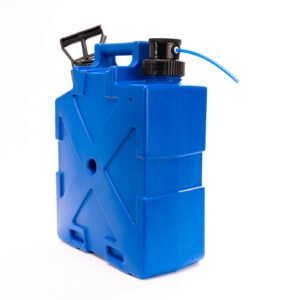Emergency Survival Kit
Of course, you can have all the emergency supplies under the sun, but you’ll need to have a portable emergency survival kit handy in case you need to evacuate in a hurry.
An emergency survival kit should cover your basic survival needs: food, water, and shelter. It should also contain essential disaster management tools such as a first-aid kit, a source of light, and methods to survive for up to two weeks.
Did you know that approximately 1 in 4 people who travel for over a week will become ill (some studies show even higher) due to contaminated water?

Access to clean drinking water is essential to any emergency survival kit. The water supply can often become polluted or be cut off during an emergency, so it’s essential to make sure you have a reliable method of water purification to ensure good disaster management. The most portable, reliable method of water purification is the Sure Aqua Survival Straw. The Sure Aqua Survival Straw is light and only slightly larger than a regular straw, making it a perfect, portable option for an emergency survival kit. Should you have sufficient space, the Sure Aqua Survival Jerrycan can provide bacteria and virus free water for a group of people.
These blankets are compact, heat resistant can be used to make shelter, and are highly reflective, making it easy for rescuers to spot you.
Naturally, a first-aid kit makes for good disaster management and is essential in any emergency survival kit. As a minimum, a good emergency first-aid kit should contain:
- Bandages
- Iodine
- Steri strips
- Band-aids
- Scalpel
- Rubber gloves
- Antibiotic cream
- Antihistamines
- Painkillers
- Insect repellent

Of course, you will need to adapt your disaster management strategy to your personal requirements. For example, make sure your first-aid kit contains an adequate supply of any prescriptive medications you may need, and be careful to keep these inside your emergency survival kit in case you need to evacuate in a hurry. If you live in a particularly hot area, make sure to include sunscreen as well.
Light is another vital part of any emergency survival kit. A medium-sized wind-up torch is an ideal option. However, if you cannot find a wind-up torch, opt for a regular torch and keep some spare batteries inside your emergency survival kit. A lighter and some matches are also essential as they’ll help you to light a fire, which can attract rescuers, provide warmth, and cook food.

What should you store your emergency survival kit in? Don’t go for anything that could burn, fall apart, or be difficult to carry. A small backpack is the best option for most people. Consider investing in a small backpack. The SureAquaPak is a smart option like a container for an emergency survival kit: it’s portable, strong and contains a method of water purification for good disaster management.




